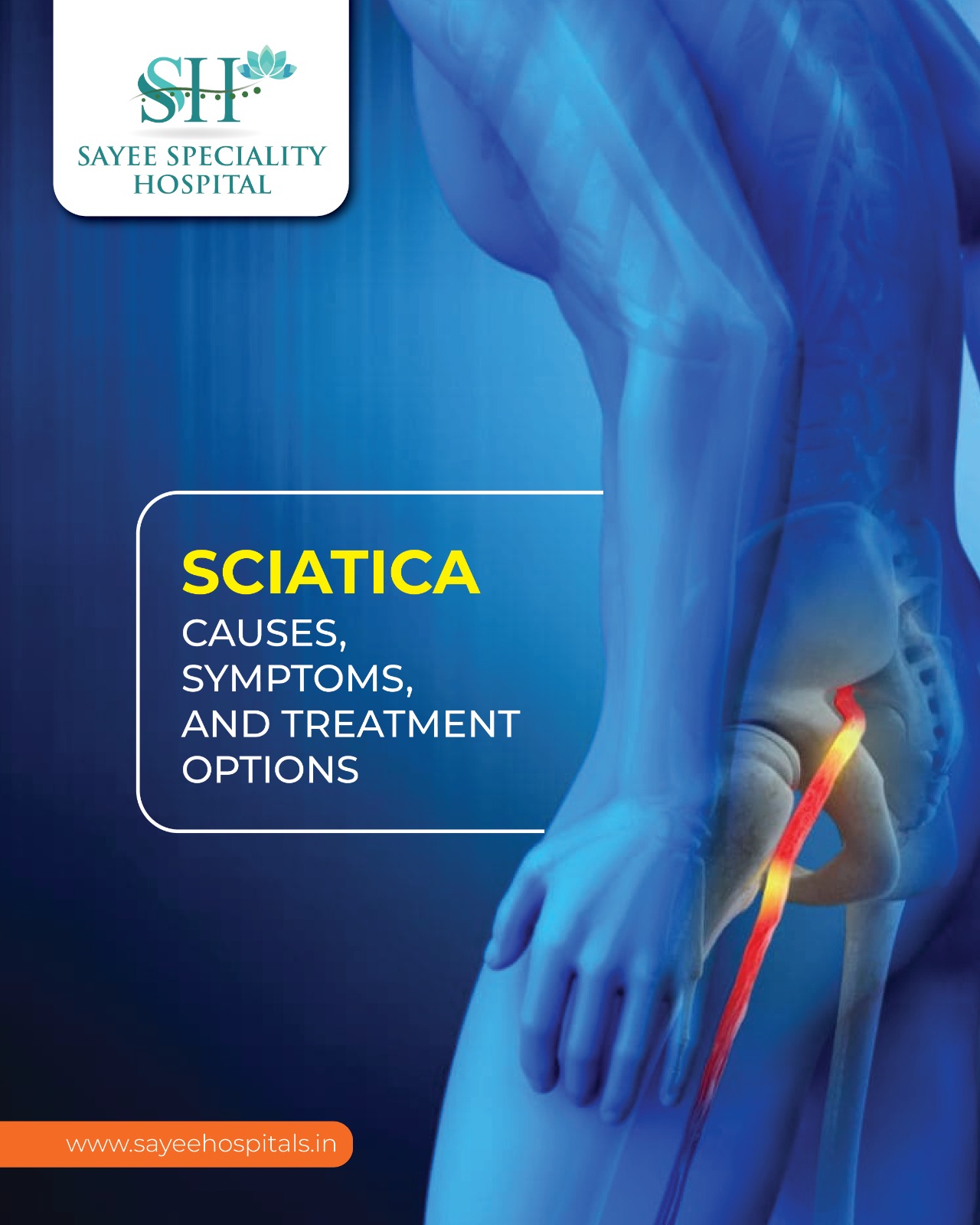The sciatic nerve is the longest and largest nerve in the human body, originating in the lower back and extending to the feet. It plays a critical role in movement, sensation, and reflexes.
- Movement: Controls muscles in the buttocks, legs, knees, and lower legs.
- Sensation: Enables feeling in the back of the thighs, lower legs, and soles of the feet.
- Reflexes: Helps maintain lower-body reflexes.
Disruption of the sciatic nerve can lead to pain and mobility challenges, highlighting its vital role in daily activities like walking and standing.
Causes and Locations of Sciatic Pain
Sciatica refers to pain caused by irritation or compression of the sciatic nerve. Common causes include:
- Herniated Disc: A damaged spinal disc pressing on nerve roots.
- Spinal Stenosis: Narrowing of the spinal canal, affecting nerve roots.
- Piriformis Syndrome: Spasms or tightness in the piriformis muscle pressing on the nerve.
- Injury: Direct trauma to the lower back or buttocks.
Pain locations depend on where the nerve is affected:
- Lower Back: The starting point of discomfort.
- Buttocks: Pain often radiates here from the lower back.
- Legs and Feet: Pain may extend down one or both legs, reaching the feet in severe cases.
Sciatic pain can feel sharp, burning, or electric, and it may be accompanied by tingling, numbness, or muscle weakness.
Treatment Options for Sciatica
A pain management doctor specializes in diagnosing and treating conditions like sciatica. Treatments include:
- Medications: Pain relievers, anti-inflammatory drugs, and muscle relaxants.
- Physical Therapy: Strengthening exercises and stretches to alleviate pressure on the nerve.
- Injections: Steroid injections or nerve blocks to reduce inflammation and pain.
- Lifestyle Changes: Weight management, improved posture, and regular exercise.
In most cases, sciatica is treatable without surgery. For severe cases, options like spinal cord stimulation or surgical procedures may be considered. Pain physicians tailor treatment plans to individual needs, helping patients find relief and regain mobility.
